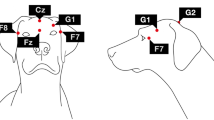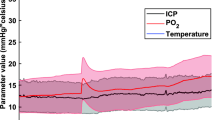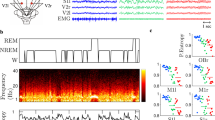Abstract
NEURAL direct current (d.c.) potentials have recently received much attention1. A steady d.c. potential across amphibian cortex in a fronto-occipital plane has been observed2. These measurable exterior surface potentials are correlated with anaesthesia and sleep3,4. High correlations have been reported between transcephalic d.c. potential (measured between mid-forehead to low union), level of anaesthesia and electro-encephalograph (EEG)5. In the awake state the surface-recorded steady potentials are frontally negative, while in anaesthesia the frontal negativity decreases, that is, the forehead becomes more positive with respect to the occiput. The general relationship between EEG activity and behaviour (sleep–wakefulness) of humans and animals is, of course, well known6,7. This correlation of behaviour and EEG breaks down following the administration of anticholinergics such as atropine8. The EEG activity is slowed, whereas the animal appears excited. Such dissociation of EEG and behaviour under atropine has been observed in cat9, dog10 and rabbit11.
This is a preview of subscription content, access via your institution
Access options
Subscribe to this journal
Receive 51 print issues and online access
$199.00 per year
only $3.90 per issue
Buy this article
- Purchase on Springer Link
- Instant access to full article PDF
Prices may be subject to local taxes which are calculated during checkout
Similar content being viewed by others
References
O'Leary, J. L., and Goldring, S., Physiol. Rev., 44, 91 (1964).
Libet, B., and Gerard, R. W., J. Neurophysiol., 40, 438 (1941).
Burge, W. E., Amer. J. Physiol., 126, 451 (1934).
Burr, H. S., and Barton, D. S., Yale J. Biol. and Med., 10, 271 (1938).
Becker, R. O., Proc. Intern. Congr. Zool., 16, 179 (1963).
Kleitman, N., Sleep and Wakefulness (Univ. of Chicago Press, 1939).
Hess, R., Koella, W. P., and Obert, K., EEG Clin. Neurophysiol., 5, 75 (1953).
Bradley, P. B., and Elken, J., Brain, 80, 77 (1957).
Funderburk, W. H., and Case, T. S., EEG Clin. Neurophysiol., 3, 213 (1951).
Winkler, A., Proc. Soc. Exp. Biol. and Med., 79, 261 (1952).
Rinaldi, F., and Hiemrich, H. E., Amer. Med. Assoc. Arch. Neurolog. Psych., 730, 387 (1955).
Becker, R. O., Bachman, C. H., and Friedman, H., N.Y. State J. Med., 1169 (1962).
Bachman, C. H., Becker, R. O., and Friedman, H., Percept. Mot. Skills, 19, 67 (1964).
Author information
Authors and Affiliations
Rights and permissions
About this article
Cite this article
COWEN, M., MCDONALD, R. Some Behavioural Correlates of the Transcephalic d.c. Potential in Cats. Nature 207, 530–532 (1965). https://doi.org/10.1038/207530b0
Published:
Issue Date:
DOI: https://doi.org/10.1038/207530b0
Comments
By submitting a comment you agree to abide by our Terms and Community Guidelines. If you find something abusive or that does not comply with our terms or guidelines please flag it as inappropriate.



